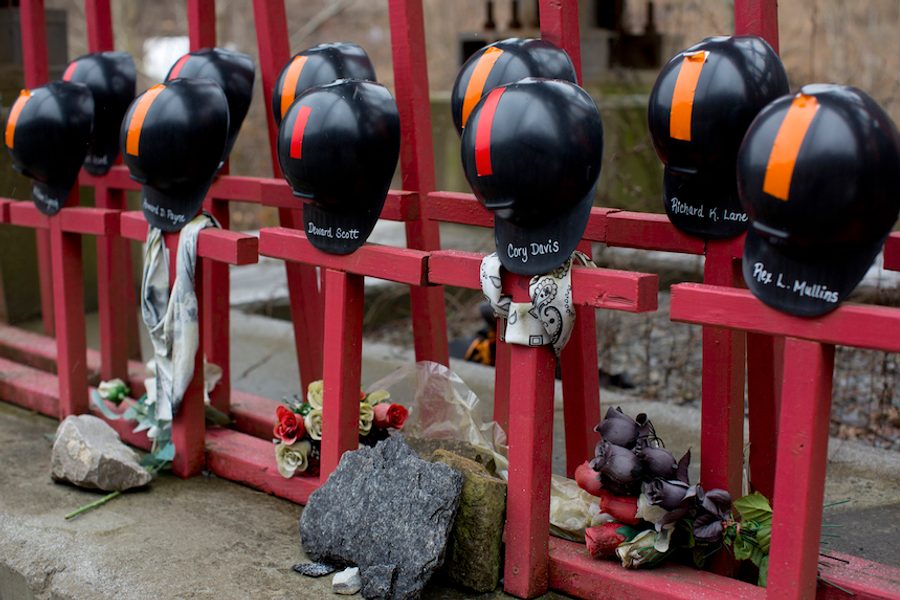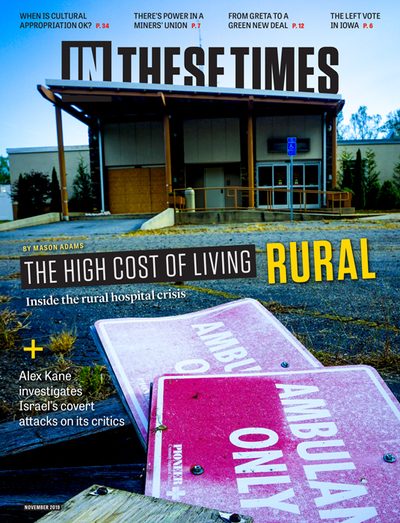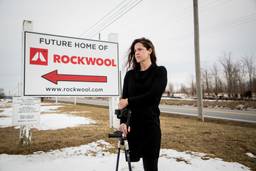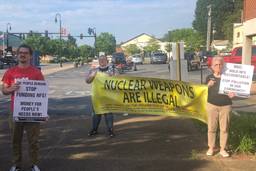When Unions Save Lives
The threat of fines doesn’t always make mines safer. But unions can.
Austyn Gaffney

CENTRAL CITY, KY. — It was a typical workday for Michael “Flip” Wilson when a splintered steel bit punctured his forehead an inch above his eye. He was operating the claw-like continuous miner, a machine that cuts coal from an underground seam. Back above ground, Wilson’s superintendent tweezed out the metal, slapped on a BandAid and sent him back under, Wilson says. It happened again two days later.
That was about five years ago, when Wilson was 60. Wilson left his final coal job at Parkway Mine in 2015. He insists he loved his 44-year career throughout Western Kentucky, though it was checkered with similar injuries: a broken finger, electrocution from a bad cable, and multiple incidents of being buried under rockfall.
“I’ve seen a guy with a broken back,” Wilson says. “I’ve carried out a guy with a leg or an arm cut off. I’ve seen guys burn up. I’ve seen 10 get killed down there at one time in an explosion.”
Kentucky has seen five coal mine fatalities this year, and while injuries from mine accidents are on the decline nationally — from more than 5,000 reported in 2005 to about 1,500 in 2018 — the Mine Safety and Health Administration (MSHA) credits the decline in part to the overall decline in coal jobs, as well as tougher enforcement.
MSHA, created in 1977, inspects underground mines quarterly. When it finds a safety hazard, MSHA can fine the mine operators. However, $100 million of $1 billion levied in penalties between 2000 and 2017 remains unpaid. MSHA has no power to compel payment unless it files a lawsuit, and operators with unpaid fines can open new mine operations without consequences.
The Department of Labor’s Office of Inspector General reported in August that MSHA’s collections program hasn’t led to safer mining operations, and no correlation exists between the amount or frequency of penalties and the safety of a mine. “Many companies see fines as the cost of doing business,” says Tony Oppegard, an attorney who specializes in mine safety cases.
There is, however, one way to prevent accidents: unions. According to a new Stanford University study of underground safety from 1993 to 2010, “Unionization is associated with a 13-30% drop in traumatic injuries and a 28- 83% drop in fatalities.”
“At a unionized mine, you have safety committeemen who are appointed by the union to look out for the safety of their fellow workers,” Oppegard says.
Almost 20% of mines were unionized in 1993, but by 2010, the proportion was below 10%. No unionized coal mines are left in Kentucky.
Wilson did not have the benefit of union protection, so he was at the mercy of the companies. “They can make it safer, but … they just want the coal,” Wilson says.
Oppegard thinks MSHA should be using more powerful enforcement tools at its disposal. For example, the agency can recommend the Secretary of Labor file an injunction to shut down dangerous mines. MSHA used this power for the first time in 2010 against a Massey Energy Company mine that had almost 2,000 citations in two years. (Massey is the same corporation responsible for the 2010 Upper Big Branch mine disaster that left 29 dead in West Virginia.)
In response, Massey simply closed the mine. Oppegard hopes legal action can reduce future safety and health violations. He has represented Wilson in safety complaints against Armstrong Coal Company, operator of Parkway Mine, where Wilson worked. Wilson claims the company violated MSHA regulations by running tests of coal dust levels for 4 to 5 hours instead of the required 8 to 10, cheating the results. Now, the federal government has filed a criminal complaint against former managers of Armstrong Coal (which went under in 2017) over the alleged test tampering. Lawyers for the defendants did not respond to a request for comment.
The National Institute for Occupational Safety and Health reports that 1 in 5 longtime coal miners in central Appalachia has black lung, a potentially fatal cluster of lung diseases, from inhaling unsafe amounts of coal dust. Since 1969, black lung has caused the death of at least 76,000 former coal miners.
Wilson has had black lung for at least 5 years. He is testifying in the federal case. But a successful suit won’t cure his condition.
“Hell, I can’t do anything,” Wilson says of his condition. “I’ve got three great-grandkids and I can’t play with them the way I want to. I run out of oxygen. And there ain’t no cure for it.”
Austyn Gaffney is a freelance reporter in Kentucky covering agriculture, energy and climate change. Her work has been featured in the Guardian, National Geographic, the New York Times, Rolling Stone and more.






